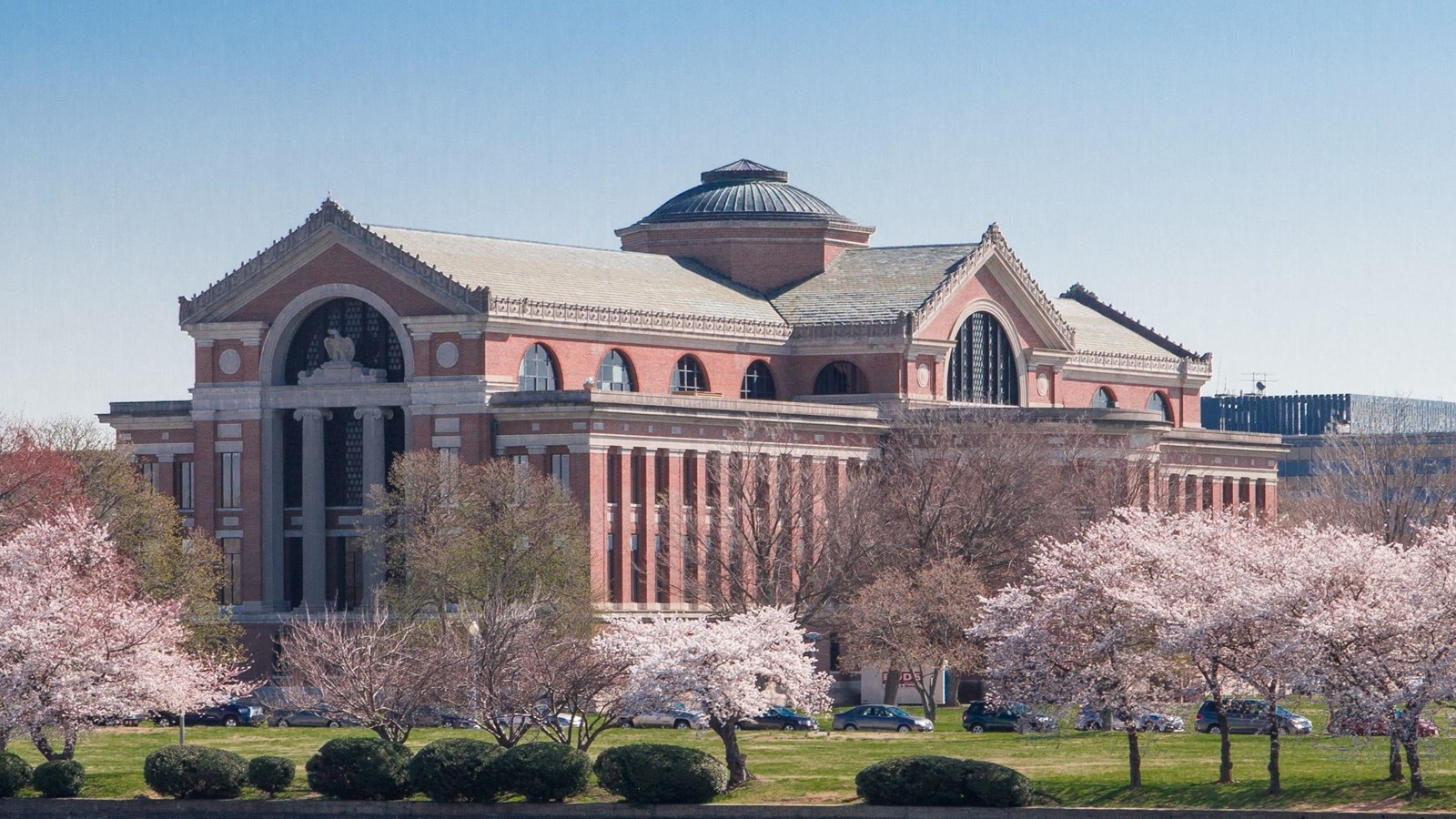Last updated: September 26, 2024
Place
National War College

National Park Service
Not only is the National War College at Fort Leslie J. McNair an outstanding example of Neo-Classical architecture in Washington D.C., but it remains an important landmark for understanding the history of the American military and its growth in the early 1900s. In 1906, President Theodore Roosevelt and Secretary of War Elihu Root committed to an overhaul of the United States military system after the Spanish-American War exposed major flaws in military organization and tactics. As part of this reorganization, President Roosevelt authorized famed New York architectural firm McKim, Mead, and White to design a new military college on federal property overlooking the confluence of the Anacostia and Potomac rivers on D.C.'s Southwest Waterfront. The aim was to develop an educational institution for future military leaders by training Army cadets in strategy, tactics, and logistics.
In 1898, the explosion of the U.S.S Maine off the coast of Cuba triggered an international war between the United States and the Spanish Empire. The Spanish-American War lasted only three months but required the United States to coordinate separate campaigns in North America and Asia. While ultimately a decisive victory for the United States, the war exposed major problems within the existing American military structure including internal disputes between the Army and the Navy and a lack of a coordination amongst separate Army units. In response, Secretary of War Elihu Root called for the reorganization of the Army command structure and the expansion of America’s military education system. To accomplish this goal, President Roosevelt and Secretary Root commissioned the building of a national war college designed to provide common tactical training to cadets from every branch of the U.S. Army.
Originally named the Army War College, Congress officially approved funding for construction in 1904. Due to opposition from some military personnel, the main building, Roosevelt Hall, was not completed until 1907. While the original plans called for the construction of dozens of additional campus facilities, limited funding ensured that Roosevelt Hall was the only large-scale building completed on campus. The College sits on the former site of the Washington Arsenal which served as the city’s main armory from the 1790s through the War of 1812 and was the site of a devastating explosion in June of 1864. The Arsenal was razed to provide room for Root’s plans. McKim, Mead, and White employed a Neo-Classical design for Roosevelt Hall featuring grand Ionic-style entrance porticos, a domed central rotunda, and large sculptures of bald eagles above the north and south entrances.
In the 1910s, the Army War College became a model of military education with Washington’s military elite serving as instructors for three hundred students recruited from Army training installations across the country. Lessons from this time period included analyzing past global conflicts and engaging in “war game” scenarios to develop tactical skills. From 1914 to 1916, the Army War College played a vital role in developing strategic preparedness plans and national defense legislation prior to the United States’ entry into the First World War. Despite being disbanded by Congress at the beginning of the Second World War, the College was reestablished in 1946 and renamed the National War College in recognition of the institution’s incorporation of students and faculty from across the nation’s intelligence network including the Central Intelligence Agency and the State Department.
An impressive example of Neo-Classical architecture, the National War College represents the landmark reorganization of the United States Military at the beginning of the 20th century. President Theodore Roosevelt and Secretary of War Elihu Root succeeded in transforming the site of the former Washington Arsenal into a military educational institution unparalleled in the United States at the time. The National War College has had a profound impact on American’s military system and trained generations of military leaders. It proved pivotal in developing America’s preparedness plans for several global military conflicts including the First World War. The National War College reflects important historical developments that contributed to the United States of America’s emergence as a world power at the beginning of the 20th century.
Sources:
Bellamy, James 2012
Fireworks, Hoopskirts- and Death: Explosion at a Union Ammunition Plant Proved Fatal for 21 Women, Prologue Magazine, Vol. 44, No. 1
Lenz, Lawrence 2008
Power and Policy: America’s First Steps Towards Superpower, 1889-1922, Algora Publishing, New York, NY
National Park Service, 1934
The National War College, National Register of Historic Places Nomination Form, United States Department of the Interior
Yarrison, James L. 2008
The U.S. Army in the Root Reform Era (1899-1917), Hampton Roads Military History (online), Vol. 2.
National Historic Landmarks (NHLs) are historic places that possess exceptional value in commemorating or illustrating the history of the United States. The National Park Service’s National Historic Landmarks Program oversees the designation of such sites. There are just over 2,500 National Historic Landmarks. All NHLs are also listed in the National Register of Historic Places.
